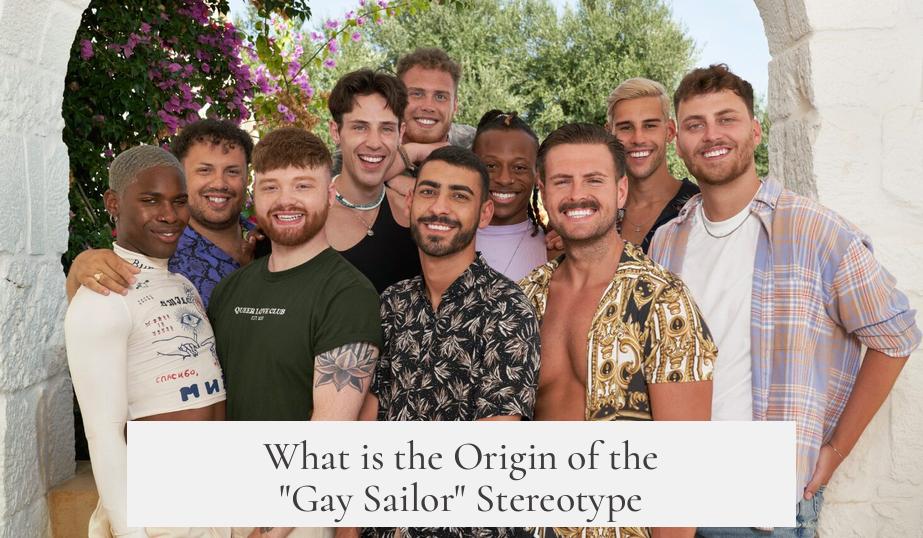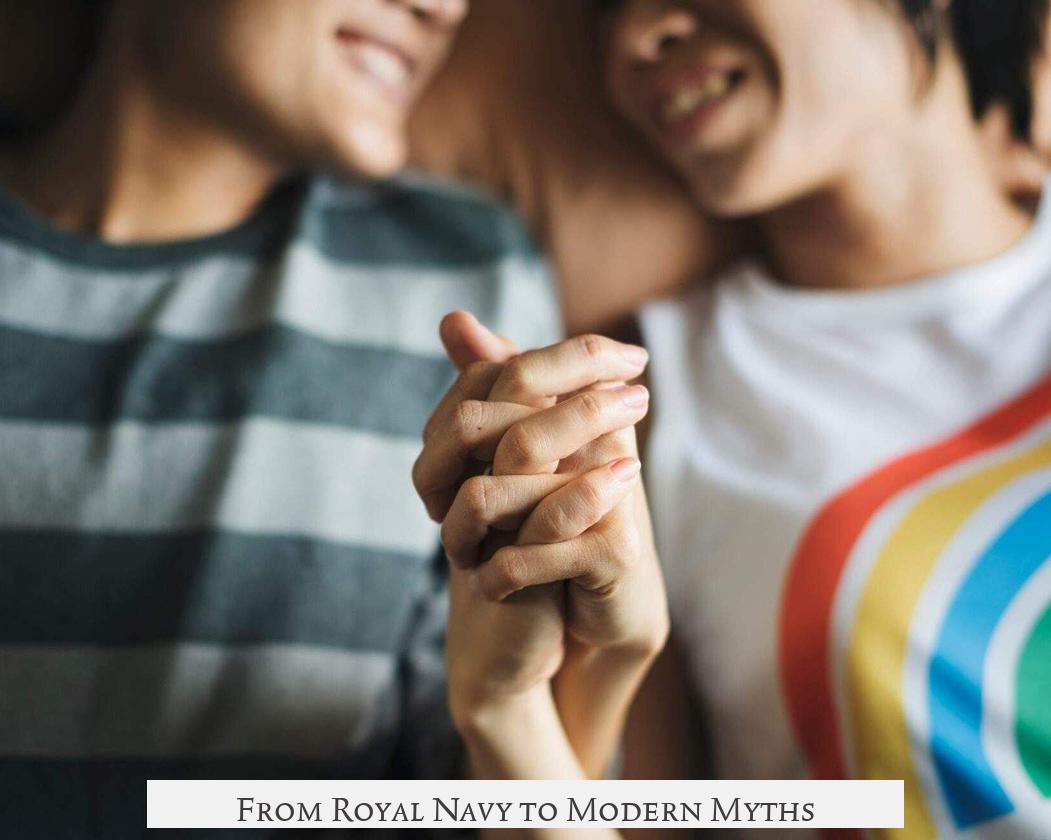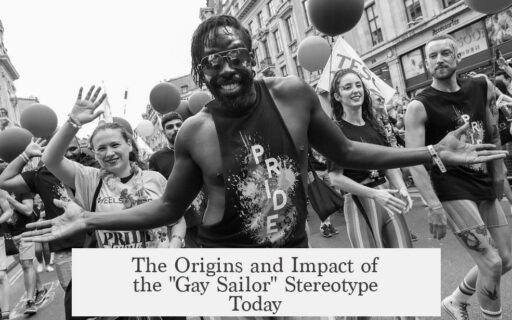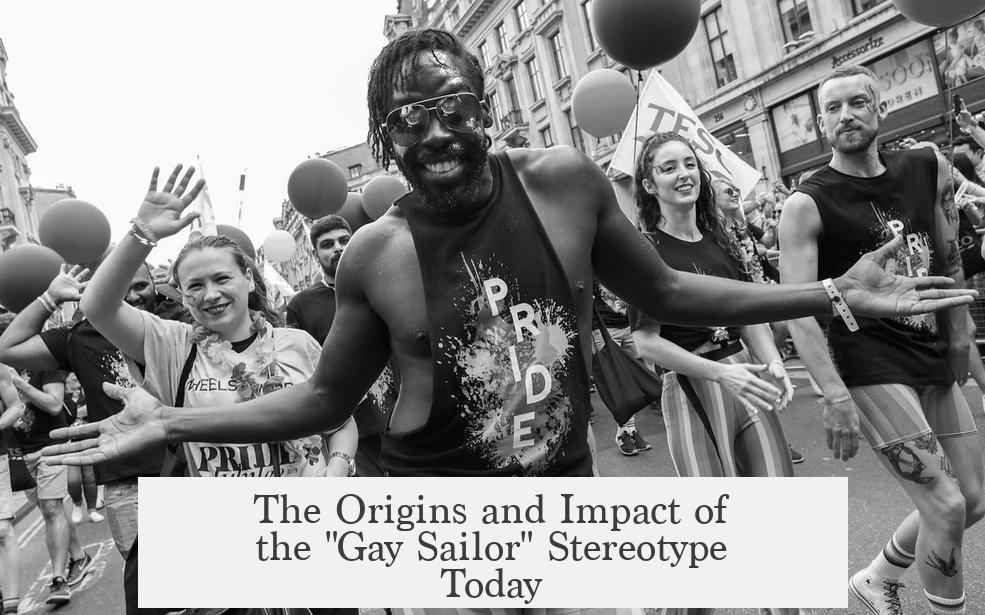The origin of the “gay sailor” stereotype stems from historical realities in naval life, particularly from periods when sailors spent extended times away from women and traditional family structures. This absence created environments where same-sex relationships or behaviors were rumored or observed, leading to the stereotype.
The stereotype predates the United States and appears in the English Royal Navy’s history. Sailors were often isolated at sea for months or years, confined to male-only settings without regular contact with women. This scarcity of women is believed to have led some sailors to engage in alternative sexual practices.
Historical records mention that while captains or officers sometimes had wives aboard ships, most sailors lived apart, with no female companionship. Evidence includes quartermasters’ records showing double rations assigned to certain women aboard ships, indicating isolated exceptions.
Despite the rumors, sodomy was officially a punishable offense in navies, often leading to severe corporal punishment or even death if discovered. This legal and military stance contributed to the secrecy and stigma around same-sex relationships in naval contexts.
- The stereotype is discussed in academic works such as Marcus Rediker’s Between the Devil and the Deep Blue Sea.
- Joe Flatman explores related themes in maritime archaeology.
- Brian Lavery’s Royal Tars examines life on the lower decks of the Royal Navy from 875 to 1850.
- Theses on venereal disease in naval fleets (1793-1815) provide sociomedical impact insights.
Today, the “gay sailor” stereotype is most strongly linked to submariners, who operate in close quarters for prolonged periods with even more limited contact with the outside world.
For broader context on gay stereotypes and communities, George Chauncey’s Gay New York: Gender, Urban Culture and the Making of the Gay Male World, 1890-1940 offers comprehensive analysis of early gay identities and labels, including stereotypes that might overlap with or inform naval perceptions.
| Aspect | Details |
|---|---|
| Timeframe | Pre-19th century and onward, English Royal Navy and beyond |
| Context | Long deployments with few or no women present |
| Legal Stance | Sodomy punished by flogging or death |
| Modern Association | Primarily submariners in contemporary views |
These factors together created and sustained the “gay sailor” stereotype, a reflection of naval life’s unique social conditions rather than a direct indicator of sailors’ sexual orientations.
- Extended male-only environments contributed to reputation.
- Punitive laws suppressed open expression of same-sex relationships.
- Academic research provides historical and cultural insights.
- Modern myth associates the stereotype mostly with submariners.
What is the Origin of the “Gay Sailor” Stereotype?

The “gay sailor” stereotype originates from a mix of historical naval life and social dynamics of seafaring communities long before the United States existed. It’s a label with roots stretching back to the English Royal Navy and beyond. The crux of this stereotype involves sailors spending extended periods—sometimes months, even years—away from women, isolated in environments dominated by men. This absence of women led to rumors and assumptions about sailors’ sexual behaviors that echo into today’s popular culture.
So, why did sailors earn such a reputation? What’s the historical truth behind the myth? Let’s unpack this dockyard tale with some hearty facts and a splash of context.
Life at Sea: The Perfect Petri Dish for Stereotypes
Imagine you’re on a ship in the 18th or 19th century. Weeks pass without seeing a woman. The crew is tight-knit but overwhelmingly male. Social and sexual dynamics on board are drastically different from those on land. As you might expect, this leads to behaviors and coping mechanisms that landlubbers may find confusing—or scandalous.
Historical records show that while captains or officers might bring wives aboard ships, the lower-ranking sailors usually did not have such companionship. Officers sometimes had wives receiving double rations, a small detail preserved in quartermasters’ records. But the common sailors? They were left to their own company—the male company.
This led to sailors engaging in what contemporary society labeled “alternative sexual practices.” In other words, in the absence of women, sailors likely formed intimate relationships or experimented sexually with each other, sparking the stereotype we know today.
The Social Taboo and Its Harsh Consequences
Here’s where it gets even tidier: sodomy was a serious crime aboard ships, punishable by flogging or even the death penalty. The Navy was strict about such offenses. This severe restriction didn’t prevent sailors from having such relations but forced these behaviors underground, wrapped in secrecy and rumor. The fear of punishment kept things hush-hush but also fueled the stereotype’s persistence.
So, the stereotype of the “gay sailor” isn’t just a modern-day caricature or Hollywood invention; it’s rooted in very real historical conditions and social pressures aboard ships. This truth, twisted over time, forged the image sailing through popular culture.
From Royal Navy to Modern Myths

Although the stereotype started centuries ago, it hasn’t faded. Instead, it transformed and found a new home in the modern navy. Today, the myth is most strongly linked with submariners rather than surface sailors. Why submariners? Maybe it’s their even more isolated lifestyle, submerged underwater for weeks, far from any female companionship. Crowded, confined, and mostly men—sounds like history repeating itself.
This modern angle keeps the stereotype afloat in contemporary military cultures and popular media, reinforcing the image with new generations.
Historical Scholarship and Insights for the Curious Mind
Curious readers should check out several key works to delve deeper into the subject. Historian Marcus Rediker discusses this in his book Between the Devil and the Deep Blue Sea, shedding light on sailors’ lives beyond the public eye.
Joe Flatman’s article Cultural biographies, cognitive landscapes and dirty old bits of boat: ‘theory’ in maritime archaeology offers another rich perspective, blending anthropology and maritime history. Brian Lavery’s Royal Tars also tackles the gritty world of the Royal Navy’s lower decks, where much of this stereotype finds its origin.
| Recommended Readings | Links |
|---|---|
| Between the Devil and the Deep Blue Sea – Marcus Rediker | Link to Article |
| Royal Tars – Brian Lavery | Link to Book |
| Thesis on Venereal Disease Impact on the Channel Fleet, 1793-1815 | Link to Thesis |
George Chauncey’s Gay New York: Gender, Urban Culture and the Making of the Gay Male World, 1890-1940 offers broader social context on gay male stereotypes, including terms like fairy and wolf, though it focuses more on urban settings rather than naval life. Still fascinating for those interested in the sociology of stereotypes!
For a bit of informal yet insightful commentary, a Reddit thread discusses the history and prevalence of homosexual intercourse on ships. It reveals that while documented evidence remains scarce due to the stigma and punishments, anecdotal and cultural knowledge points to its historical presence.
Why Does This Matter Today?
Understanding the origin of the “gay sailor” stereotype helps us see beyond clichés. It shines a light on how social structures and extreme environments shape human behavior and stereotypes. It also encourages us to question how historical realities are simplified into caricatures.
Have you ever wondered why this stereotype sticks around when the navy and society have changed so much? Because myths are stubborn. They are built on kernels of truth, clothed in exaggeration, and passed down through jokes, movies, and casual remarks.
The real lives of sailors, their struggles, and the harsh conditions they faced make the stereotype less about an inherent trait and more about context and circumstance. A sailor’s sexuality wasn’t a punchline or a defining characteristic; it was shaped by the long seafaring voyages and the prison-like environment on board.
Wrapping Up: Sailors, Stereotypes, and Stories
So, next time you hear someone joke about the “gay sailor” stereotype, you can share the real story. It’s a tale about isolation, survival, and human connection under difficult conditions. It’s history, not hearsay.
Ships were harsh, lonely places that challenged sailors in unexpected ways. The stereotype simply surfaces from that harsh environment. Instead of judging, why not appreciate the brave souls who sailed the world’s seas, often away from the comforts of home and companionship?
Feeling curious about other “maritime myths”? There’s a whole ocean of history out there waiting to be explored—sometimes with less rumor and more reality.




